Is Human Pop. Growth Exponential?
Yes, but it is not UNBOUNDED exponential growth.

Now the representation of exponential growth as manifest by the rabbits is where a lot of unnecessary confusion comes into play when describing
the population growth of humans. The term exponential growth does not immediately imply unbounded growth, and it is foolish to think otherwise. Period. In fact, virtually all mammalian populations grow
according to a method called the logistic growth curve. The waveform of that kind of growth is shown below:
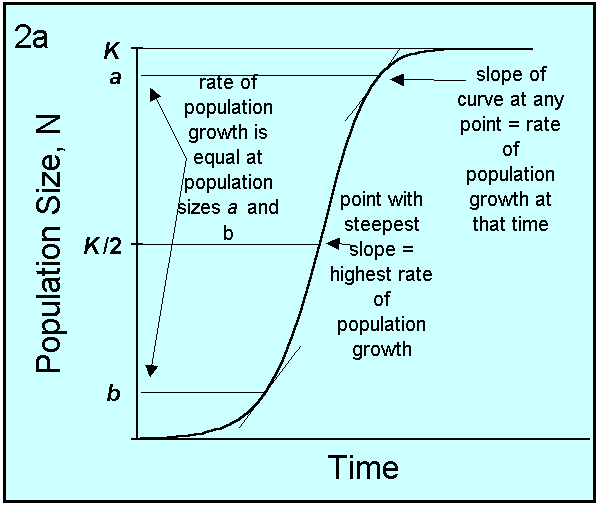
And exhibits the important feature that, as the population reaches its carrying capacity (K), the rate of growth decelerates.
Currently the rate of growth of the world's population is in the deceleration phase as evident by the following data: (however,
this still means the population is growing exponential but
at a rate which is changing).
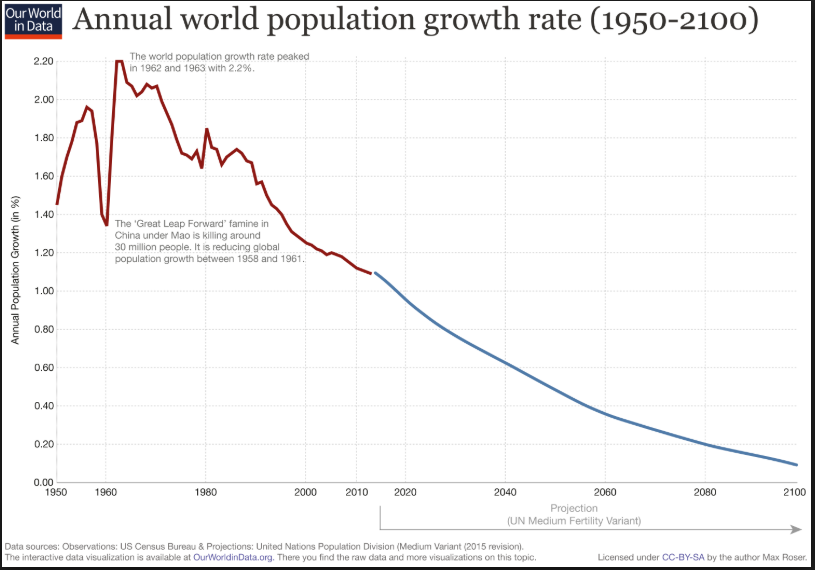
Some important features of this waveform are the following:
- The obvious dip in the 1958-1960 data was due to the Great Leap Forward in China. A combination of both natural disasters and decreased agricultural output caused China's death rate to rise sharply and its fertility rate to fall by almost half.
- Overall, however, the world population growth increased from 1.5 to
2.2 % in just a little over a decade --> 2.2% has a doubling time of about 30 years and that was adisastrous trajectory that humanity
was on.
- This unsustainable growth rate was recognized and a massive UN led fertility education effort occurred on a global scale. This was fairly
effective as the population growth rate would decline, over a timescale
of 15 years, from 2.2% down to 1.7%.
- But, by 1977 the growth rate stabilized at around 1.7% for about
another 15 years. In this period, human growth was truly increasing exponentially at constant growth rate.
- Starting around 1990, the growth rate begins to slowly decline.
The rate of that decline over the period of 1990 to 2000 was .03%
per year. Since 2000, the rate of decline has slowed dramatically
to .01% per year.
- The current world growth rate is 1.09% per year.
The actual annual data can be found
here. The 2016 population growth was 1.18% that has a doubling time of 70/1.18 = 60 years compared to the 2000 population growth of 1.32% of a doubling time of 53 years.
Small differences
in growth rates make big differences in the future population that as ultimately the exponential doubling time is what matters.
You can test some scenarios using the interactive below.
Right click to open this example in a new window and do
the following:
- Set the growth rate to its current value of 1.18 and then set the year to 2050 (you will still be alive then).
Note the value (should be around 11 billion).
- There are some theories that suggest the world population growth rate can never get below 1% because then countries will have difficulty replacing their workforce and their military (although drones are likely the combat of the future). Suppose the world agreed to 1% starting now and said that rate was okay
so we can just let it go. Set the rate to 1% and the year to
2100. Note the value!
- Suppose you want to live in a world where the population is stabilized at 8 billion in the year 2050. Turn the year back to 2050 and adjust the growth rate to yield that outcome. Do you think this low of growth rate is a likely scenario?
Future population predictions are difficult to make. It is more complicated that the simple approaches
that produce these alternatives:
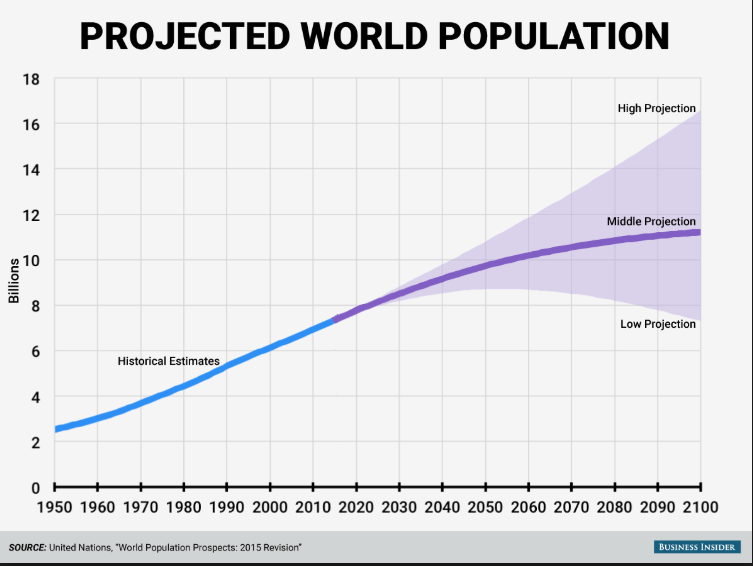
The two principle unknowns in producing the above kind of projections are:
- Life expectency increases
- Population growth rates in developing nations that want to
quickly grow their work force (or military)
Differences in individual countries population growth rates can no be easily found as Google is directly linked to various data bases via the search box, but the data lags by a couple of years (unavoidable)
- "population growth rate uganda" = brings up graph and 3.3%
- China = 0.5% (well below average of the world)
- India = 1.2%
- Pakistan = 2% (alarming)
- Mexico = 1.3%
- USA = 0.7%
- Sweden = an example that had to rebound from too small of population growth rate in order to sustain a future labor force
- Finland = 0.3%
Also be aware that exponential growth is just one example of non-linear growth. Non-linear growth means that the input value of x
produces a proportionally large value of the output Y. An example of this is given below.
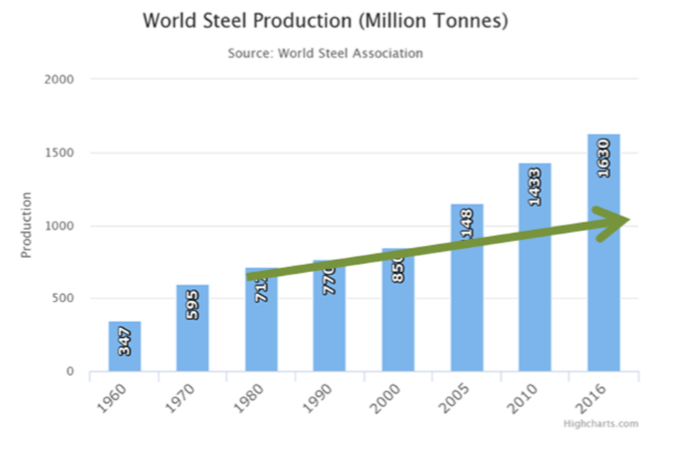

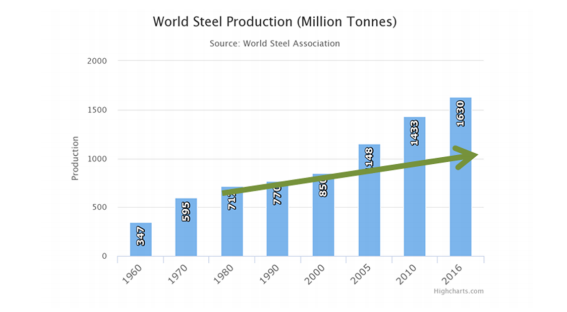

|

